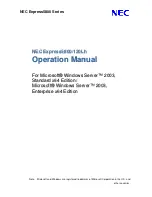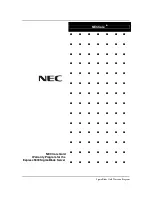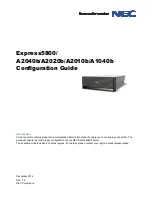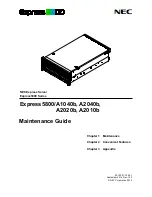
889-3819-00
MMU2-1600GE series Operations Manual Rev Apr 2020 Page
5
of 51
2.1.13
PORT 1 DISABLE
The Port 1 Disable input (Port 1 SDLC Connector - Pin 10) is a logic level input. When this signal is in the low
state (nominal 0 volts), the monitor will ignore Port 1 SDLC communications errors. Port 1 SDLC
communications errors are always ignored during type 12 operation.
Typical Connection: Unterminated when Port 1 SDLC communications will be used. Logic Ground when Port 1
SDLC communications are not used in Type 16 operation.
2.1.14
RESET
The Reset input (Connector A - Pin BB) is a logic level input. When this input transitions to the low state (nominal
0 volts), a fault reset is performed.
Typical Connection: Unterminated or tied to +24VDC. Should be used only for automated testing.
2.1.15
CABINET INTERLOCK
The monitor has two terminals internally connected to indicate the presence of the unit to external circuitry. These
terminals are identified as Cabinet Interlock A (Connector A - Pin CC) and Cabinet Interlock B (Connector A - Pin
DD).
Typical Connection: Interlock circuitry that will not allow the cabinet to operate normally with the monitor
removed.
2.2
OUTPUTS
2.2.1
OUTPUT RELAY
The Output relay of the monitor has two sets of isolated Form C contacts. These relay contacts are capable of
switching all loads in the range from two milliamps at 18 volts DC to three amperes at 135V
RMS
AC.
The Normally Open (N.O.) contacts of the Output relay are the contacts that are open when the unit is in the No
Fault state and all voltages are sufficient for proper operation of the Controller Assembly. The relay coil is
energized in the No Fault state.
Prior to the monitor transferring the Output relay contacts from the Fault state to the No Fault state, a Transition
state with a duration of 500 milliseconds occurs. During the Transition state the Output relay contacts are the same
as the Fault state and the monitor sets the Start-Up Flash Call bit (bit 80) of the Type 129 Frame to 1. At all other
times the Start-Up Flash Call bit of the Type 129 Frame is set to 0.
Typical Connection: One set of contacts is used to control the flash transfer relays the other is usually used to apply
stop timing to the controller.
2.2.2
START DELAY RELAY
The Start-Delay relay has one set of Form C relay output contacts. These relay contacts are capable of switching
all loads in the range from 2 milliamps at 18 volts DC to 3 amperes at 135V
RMS
AC.
The monitor includes a means of detecting a loss of AC Line power. Upon restoration of AC Line following a
monitor power loss, the Start-Delay relay maintains continuity between its Common and Normally Open contacts
for a period of 2.0 ±0.5 seconds. Following this 2.0 second time period, the Start-Delay relay enables continuity to
occur between its Common and Normally Closed contacts.
The operation of the Start-Delay relay normally results in the initiation of a start-up sequence within the Control
Unit by interrupting the AC Line input to the Control Unit.
Typical Connection: The Common and Normally Closed contacts are used to route AC power to the controller.
2.3
PROGRAMMING CARD
This monitor uses a standardized programming card for channel compatibility (permissives), minimum flash time,
per channel Minimum Yellow Change Disable, CVM latch, and 24 volt monitor latch. Programming of this card is
accomplished through the use of soldered wire jumpers. The programming card plugs into the monitor through a
slot in the front panel. The monitor is constructed with card guides to ease the insertion of the programming card.
The programming card includes card ejectors to ease removal of the programming card. The edge of the
programming card is flush with the surface of the front panel when it is properly seated in the programming card
slot of the monitor. The
PRGM CARD
LED will illuminate if the programming card is not properly seated while
power is applied.
Programming cards supplied by Reno A&E have an integral serial EEPROM which can store the other settings for
the monitor which are not programmed using soldered jumpers.
See Section 3.5 for programming card connector pin assignments.















































